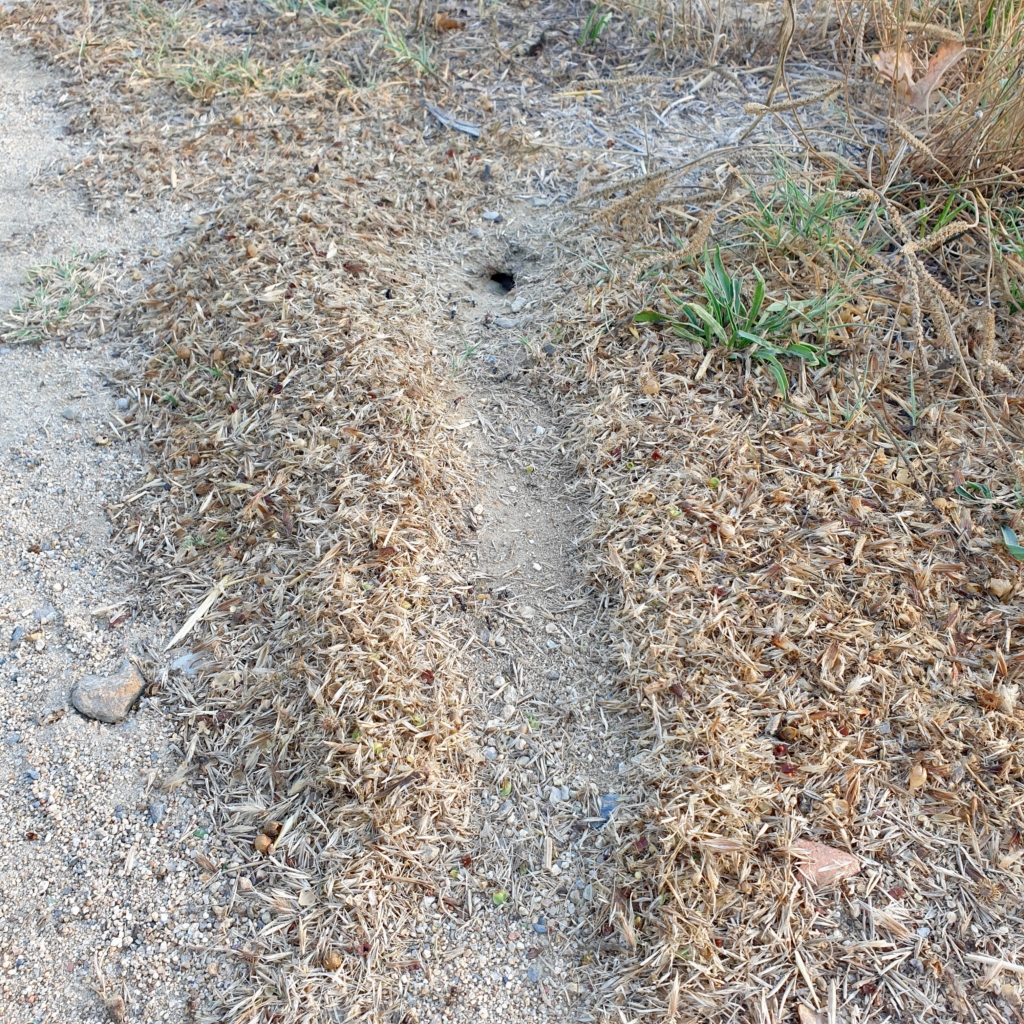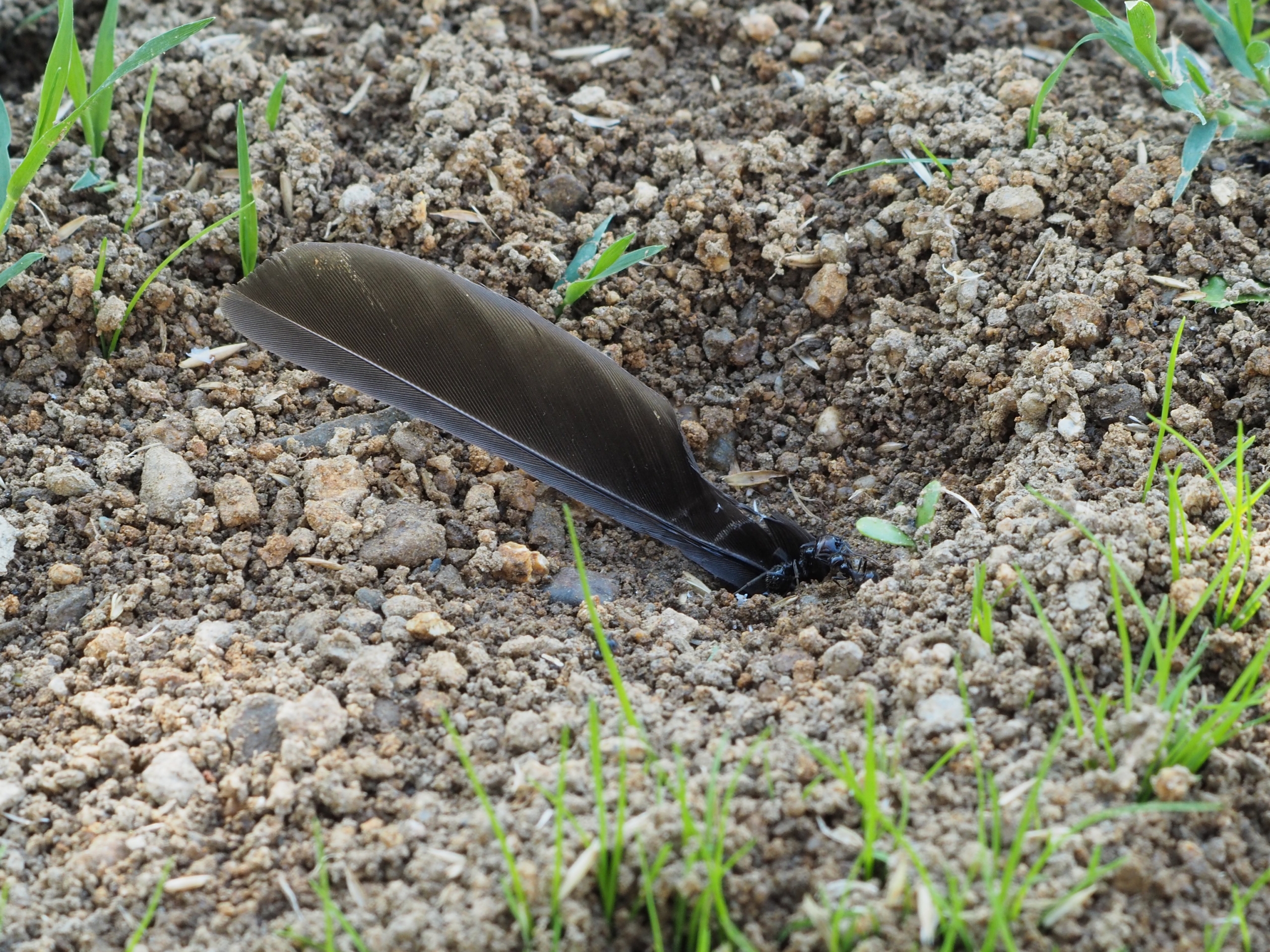Autumn Antics
By Lesley McLaren
Ants aren’t loved by many, especially when they invade the house. However, one of the most common and arguably fascinating species in Mediterranean areas like ours is the Harvester (Messor barbarus), which won’t be remotely interested in heading for your kitchen in search of meaty or sugary tidbits. Whilst they will occasionally eat animal protein, as their name suggests, they are primarily seed collectors. You’ll find them everywhere in the P-O: in verges, vineyards, orchards, scrub & light woodland. We’ve had a colony under our small back lawn for a few years. The only downside to this is that they ensure little or no vegetation grows in a 1-2m circumference around it, which, on top of the drought, is turning our grass into an unsightly, barren desert. On the plus side, Harvesters help aerate soil, mix deep soil layers with those higher up and incorporate organic refuse. They disperse seeds and can help keep weeds down. And they play their part in the food chain, being preyed upon by birds, lizards and geckos… They are also fascinating to watch close-to. Colonies, which may be many thousands-strong, often have more than one entrance and can be quite deep, with many galleries. Collected seeds are kept dry and away from daylight in big granaries, to prevent germination.
70% of their diet consists of “ant bread”, formed by chewed plant material mixing with saliva. Any remains are later removed and deposited in chaff heaps (called middens) around the colony entrance.

In summertime they always sensibly have a siesta – avoiding the hottest, driest part of the day – and in wintertime they semi-hibernate.
Workers (all female) can live 3 to 5 years. The most numerous – “minors” or “medias” – are all black.
Less numerous “majors” are instantly recognisable by their over-sized, reddish heads.
The majors are the heavy lifters of the colony, clearing galleries & paths of stones, transporting and grinding the biggest, hardest seeds and sometimes feathering the nest!
After a day-long struggle to pull the above feather into the nest, it finally would go no further and had to be removed & dumped on the midden. By then some shafts had been chewed around the base, presumably to remove any residual protein.
Though not soldier ants as such, the majors will use their formidable jaws in defence if necessary. Raids and grain theft are not unknown!

In autumn you may see huge swarms of flying Harvesters. They’re comprised exclusively of new (massive) queens and males.
Last year we had two swarm events in our garden, on hot days after rain in mid-October.

After lift-off, the queens and males mate on the wing. The males die afterwards, even if they haven’t managed to mate.

The queens land, and find a suitable site to burrow underground – shedding their wings in the process – to start a colony of their own.
The following spring each queen will raise the first workers by herself – and she may live for 20 years or more!






